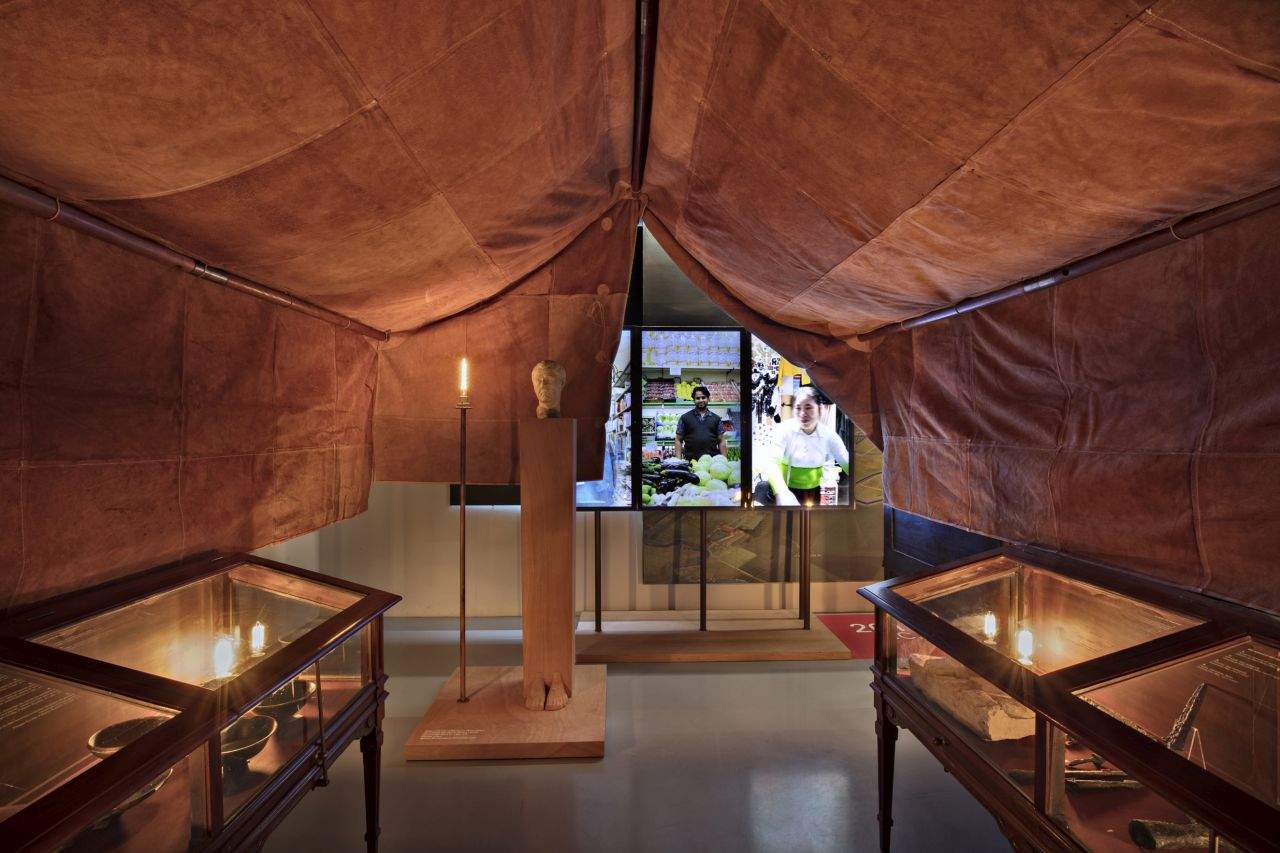The exhibition On the Road - Via Emilia 187 BC continues at the Palazzo dei Musei in Reggio Emilia. - 2017, a grand historical narrative to enhance the Via Emilia from the beginning of its history to the present. The exhibition, which opened last Nov. 25 and runs until July 1, 2018, is curated by Luigi Malnati, Roberto Macellari and Italo Rota and is organized as part of the program “2200 years along the Via Emilia. ”There are several objects on display to tell about characters and stories related to the Via Emilia, traced in 187 BC.C. by the consul Marcus Aemilius Lepidus, to whose figure part of the exhibition is dedicated (it was he who, after defeating the Celts and Ligurians, decided to build a road connecting Rimini and Piacenza).
On display are more than four hundred archaeological artifacts, also immersed in contexts designed to recreate the living environments of the ancient Roman road, including through the use of film clips, and to evoke the biographies of the personalities whose events unfolded along the course of the Via Emilia. There will also be multimedia installations staging comparisons between the historic and contemporary Via Emilia, 3-D reconstructions (such as that of the city of Regium Lepidi, the ancient Reggio Emilia that in its very name was intended to pay homage to the founder of the Via), photographs, video projections and much more, including an enhancement of the historical collections of the Reggio Emilia Civic Museums (which will particularly affect the Roman marble cloister and the marble portico that displays funerary monuments once located along the Via Emilia). Important loans are also on the way, such as the large milestone from the Archaeological Museum of Bologna, one of four silver vases from Vicarello (coming out of the National Roman Museum for the first time), the sculpture of the surveyor coming from the Museum of Roman Civilization in Rome, and a portrait of Marcus Aemilius Lepidus from the National Archaeological Museum in Luni.
“Reggio Emilia,” reads the presentation of the review, “sums up in itself both its own peculiarities and elements common to the consular road and all the cities it links and connects. In the system of celebratory events, it is up to Reggio Emilia to specifically propose a reflection on the history of the Via Emilia and its Founder, on its significance in the contemporary world. Reggio is the only city in Emilia that preserves in its name the memory of the founder (eponym), but also of the road on which the entire population of the region was set, which, in turn, would take its name from it. And the region of Emilia is probably the only one in the world to derive its name from that of a road. From limes, the boundary between Roman Italy and a north inhabited by ”other“ peoples, the Via Emilia would not be slow to become not only the backbone of communication in the Po Valley, but also the glue of people speaking different languages and carrying different cultures.”
The exhibition opens daily except Mondays from 10 a.m. to 1 p.m., Saturdays and Sundays from 10 a.m. to 7 p.m. Special openings: Dec. 23, 2017 to Jan. 7, 2018 from 10 a.m. to 7 p.m. (but Dec. 24 and 31 from 10 a.m. to 1 p.m. and Dec. 25 and Jan. 1 from 3 p.m. to 7 p.m.). Tickets: internal 5 euros valid for one access, full 10 euros valid for unlimited access, reduced 3 euros (15 to 25 year olds, over 65, disabled, groups of at least 15 people, Mutina splendidissima exhibition ticket holders, Card Musei Metropolitani di Bologna, Palazzo Magnani exhibition ticket holders, Italian Touring Club members), free for children under 14, accompanying disabled, accredited journalists, accompanying groups. The ticket gives reduced access to the exhibitions Kandinsky -> Cage, Mutina splendidissima, Medioevo svelato (in Bologna from Feb. 16), Fotografia Europea 2018 (in Reggio Emilia from April 20). Info at 0522 456477 or www.musei.re.it.
Pictured is a room from the exhibition. Ph. Credit Carlo Vannini
 |
| A great historical account of the Via Emilia in Reggio Emilia. |
Warning: the translation into English of the original Italian article was created using automatic tools. We undertake to review all articles, but we do not guarantee the total absence of inaccuracies in the translation due to the program. You can find the original by clicking on the ITA button. If you find any mistake,please contact us.